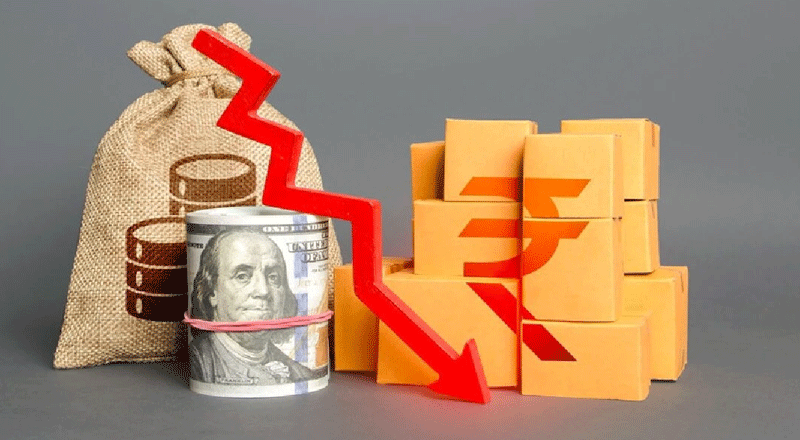A Historic Decline for the Indian Rupee
The Indian Rupee (INR) has fallen to an all-time low of 87.1 against the US Dollar (USD), marking a significant shift in global financial markets. This decline, which occurred on Monday morning, was further exacerbated by US President Donald Trump’s imposition of tariffs on Canada, Mexico, and China. As global trade tensions escalate, the rupee, along with other emerging market currencies, continues to experience downward pressure.
Impact of Trump’s Trade War on the Rupee
For some time, the INR had been on a gradual decline; however, Trump’s recent tariff announcement has accelerated the depreciation. Compared to its previous close of 86.6162, the rupee plummeted to 87.1274 with a 0.5% loss in early trading hours. Experts predict further depreciation in the coming days as uncertainty looms over global trade policies.
Moneycontrol reported that the US Dollar Index, which measures the USD’s value against six major global currencies, surged to 109.825, reflecting a growing demand for the dollar as a safe-haven asset. According to Anil Kumar Bhansali, Head of Treasury at Finrex Treasury Advisory LLP, “The Indian rupee has fallen to its lowest level as Trump’s tariffs unsettle global markets, fueling risk aversion across all assets, including gold and cryptocurrency.”
Market Reactions and Expert Predictions
The rupee’s depreciation is part of a broader trend affecting global currencies. On Monday, the INR hit a fresh low of 87.1450 per dollar, reflecting a 0.6% decline from Friday. Since October, the rupee has lost nearly 4% of its value.
According to Anshul Chandak, Head of Treasury at RBL Bank, “Macroeconomic factors remain unfavourable for the rupee, and we expect further pressure over the next six to eight weeks.” He also noted that under Trump’s administration, the rupee has been relatively stable compared to other emerging market currencies, but more depreciation is likely.
Broader Global Implications
The impact of Trump’s tariffs is being felt beyond India. Other Asian currencies, such as the Korean Won, Malaysian Ringgit, Indonesian Rupiah, and Thai Baht, have also suffered losses ranging between 0.9% to 1.2%. Morgan Stanley issued a warning that “risks of further escalation are increasing,” adding that Asia remains highly vulnerable due to its strong trade ties with the US.
In response to Trump’s tariffs, Mexico and Canada have announced retaliatory duties, fueling further economic uncertainty. Mexican President Claudia Sheinbaum confirmed that Mexico would implement countermeasures, while Canadian officials are also considering legal action.
Foreign Investment and Equity Market Impact
Foreign investors have been withdrawing funds from Indian equities due to the country’s slowing growth rate. Trump’s tariffs are expected to further drive fears of a global economic slowdown, increasing capital outflows from India’s stock and debt markets.
According to RBL’s Chandak, “The pressure on capital outflows is likely to persist, and the Reserve Bank of India’s (RBI) reduced intervention strategy may further weaken the rupee.” If the situation escalates, the Indian economy could face prolonged inflationary pressure and economic stagnation.
What Lies Ahead for the Rupee?
With Trump’s aggressive trade policies shaking global financial markets, the Indian Rupee faces continued volatility. While experts foresee further depreciation in the coming weeks, much depends on global trade negotiations and government interventions. Investors and policymakers must prepare for an uncertain economic landscape, with heightened risks of inflation, slowed growth, and ongoing trade disruptions.
As global markets react to Trump’s tariffs, the next few weeks will be crucial in determining the rupee’s trajectory, as well as the broader economic outlook for India and its trade partners.
(With inputs from agencies)





